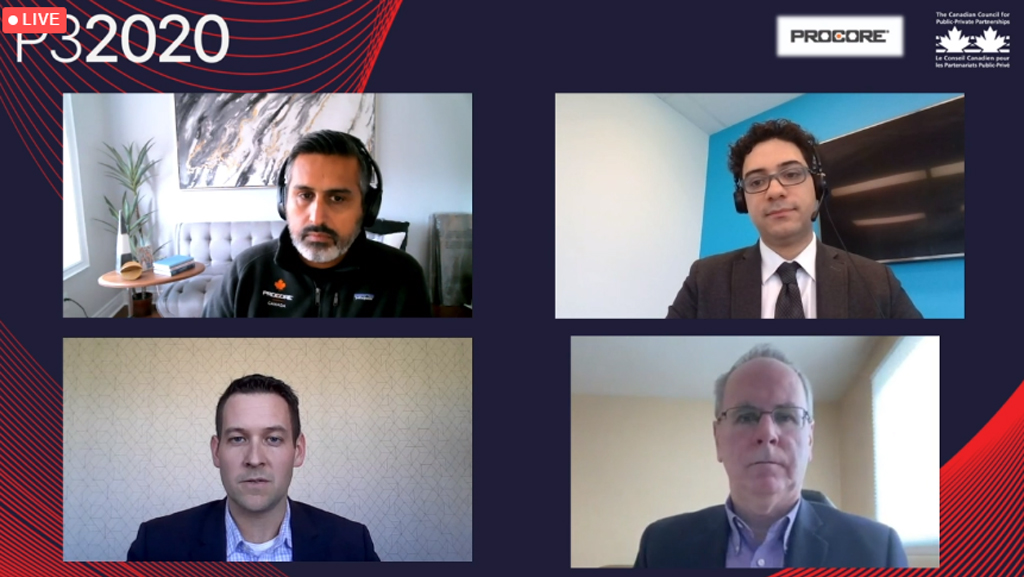A panel of experts say new construction technology can’t succeed without collaboration.
Procore Technologies Canada vice-president Jas Saraw was the moderator for the Using Technology to Drive Collaboration and Manage Risk in Large and Complex Projects session held recently at the Canadian Council for Public-Private Partnership’s annual conference, held virtually this year due to the COVID-19 pandemic.
The panel, comprised of Pomerleau innovation manager Yuri Bartzis, Aecon Group UTS operations vice-president Aaron Johnson and Export Development Canada (EDC) global trade director John Elder, all agreed in the value big data provided if is utilized properly.
“You want to be able to extract raw data and use it to push the project forward. To make quick decisions on massive projects like P3 projects, you need to have data at your fingertips when you need it,” Bartzis said.
“For us, it’s about digital delivery, driving everyone to a common model and platform and then we can effect a better outcome for the project,” Johnson said.
Elder agreed but cautioned large projects come with a variety of stakeholders and different points of view.
“Data has to be turned into something actionable and sometimes that’s difficult as different people have different views of it,” he said.
“What does that data look like? It can be very daunting to look at the data and figure out how to create actionable information out of it. From EDC’s point of view, real-time analysis is important right through to operations of assets.”
Johnson pointed out all participants should be on common platforms during a project but “there may not be one platform that checks all the boxes.”
“One designer will have a way of doing things, another will have different way, and the trick is to structure up front and make sure accountabilities are clear and everyone is playing in same sandbox. One organization should take the lead in managing because the likelihood is one or two parties have worked on projects before and can bring forward solutions,” he said.
Bartzis pointed out Pomerleau integrates digital 3D models into schedules but that doing so is not as of yet common practice in Canada.
“It’s really the foundation of data-driven projects. It enables other technology like sensors and robotics,” he said.
He added while Pomerleau’s focus is on data collection, he doesn’t see similar behaviour throughout the industry.
“When you’re using artificial intelligence (AI) and other advanced technology, you need a database of data so the machine can learn. We need to focus on data collection first before construction can move into AI and robotics,” Bartzis said.
Adaptability is another key to innovation and delivery, Johnson said.
“We’ve looked outside our digitalization road map, not only at the types of projects we usually do but also looking at our large industrial or nuclear work and saying, ‘what do they do well that we can bring over?’” he said.
“Many countries are evolving digital strategies from smart cities to smart grids to BIM technology. Technology can drive complex projects to be a little less complex and can reduce risk on projects,” Elder added.
Follow the author on Twitter @JOCFrey.











Recent Comments
comments for this post are closed